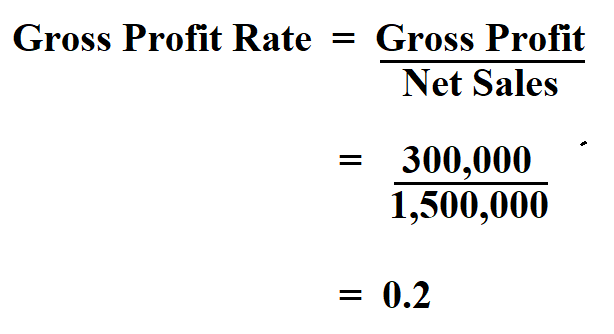
It’s an indicator of a company’s financial health and can be used to track growth and create strategies for growing profits. In general, a higher gross profit margin indicates stronger profitability and operational efficiency. However, the key is to strike a balance between maximizing profit and remaining competitive. What’s considered a “good” gross profit margin for one business may not be the same for another. Ultimately, a healthy gross profit margin aligns with your business’s unique circumstances, objectives, and industry standards.
- The more you can keep your fixed costs down and lower your variable expenses, the more you can expect in gross profits.
- Gross profit isolates a company’s performance of the product or service it is selling.
- Monica owns a clothing business that designs and manufactures high-end clothing for children.
- Gross profit helps determine whether products are being priced appropriately, whether raw materials are inefficiently used, or whether labor costs are too high.
- After almost a decade of experience in public accounting, he created MyAccountingCourse.com to help people learn accounting & finance, pass the CPA exam, and start their career.
- Gross profit is calculated by subtracting the cost of goods sold from the business’s revenues for a given period.
Income Statement
As always, it’s critical to comprehend the workings of the gross profit ratio formula and the significance of its inputs. Now that we are clear on what the gross profit percentage means, let’s examine the gross profit ratio formula’s operation and the precise meanings of its many components. Once the elements that go into calculating gross profits are described, learning how to do so is a straightforward procedure. Total revenue, often known as gross sales, is the first part of gross earnings. A higher gross profit margin indicates a more profitable and efficient company. However, comparing companies’ margins within the same industry is essential, as this allows for a fair assessment due to similar operational variables.
What is the approximate value of your cash savings and other investments?
High gross profit margins indicate that your company is selling a large volume of goods or services compared to your production costs. Only the variable costs directly related to the manufacturing of your goods or services are included in the gross profit margin formula. The final metric excludes larger business costs like rent for the corporate office. Instead, these expenditures are commonly listed as “Selling, General and Administrative” charges on an income statement. However, high prices may reduce market share if fewer customers buy the product.
Get Help Keeping Your Finances Straight
Gross profit is calculated by subtracting the cost of goods sold (COGS) from net revenue. Net income is calculated by subtracting all operating expenses from gross profit. Net income reflects the profit earned after all expenses, while gross profit focuses solely on product-specific costs. Companies strive for high gross profit margins, as they indicate greater degrees of profitability. When a company has a higher profit margin, it means that it operates efficiently. It can keep itself at this level as long as its operating expenses remain in check.
Revenue
By understanding and effectively utilizing this metric, businesses can make informed decisions, attract investors, and work towards sustained financial success. Gross margin is calculated by dividing gross profit by sales revenue and multiplying the result by 100. In contrast, gross profit is determined by deducting the cost of goods sold (COGS) from the sales income. Understanding gross profit is key to tracking business growth, assessing overall financial health, and developing strategies to increase profitability.
How to Calculate Gross Profit (Formula and Examples)
Gross profit margin is calculated by subtracting the cost of goods sold from your business’s total revenues for a given period. Good gross profits vary by industry, tax deductions and credits and new businesses typically have a smaller gross profit ratio. The aim is to steadily increase your gross profit margin as your business gets established.

Usually a gross profit calculator would rephrase this equation and simply divide the total GP dollar amount we used above by the total revenues. In the dynamic world of business, understanding your company’s financial health is crucial for success. This guide will walk you through the process of calculating profit percentage, from basic concepts to advanced applications, empowering you to make data-driven decisions for your business. A company’s gross profit margin can be used to assess the business’s financial health and pricing strategy since it represents the money it makes after accounting for the cost of doing business.
At the end of the year, Garry determines the company’s annual revenue for the year is $850,000. The Gross Profit metric reflects the earnings remaining once a company’s cost of goods sold (COGS) are deducted from its net revenue. The profit rates can also be used by retail businesses to identify which sales procedures need to be improved in order to foster stronger client relationships that boost sales. Can be used to calculate and manage manufacturing expenses but not for making general financial decisions. Management can use the net profit margin to identify business inefficiencies and evaluate the effectiveness of its current business model.
XYZ Ltd. is in the business of manufacturing customized roller skates for both professional and amateur skaters. At the end of the financial year, XYZ Ltd. had earned $150,000 in total net sales and the following expenses. The net profit to gross profit ratio (NP to GP ratio) is an extension of the net profit ratio. If we deduct indirect expenses from the amount of gross profit, we arrive at net profit. In other words, gross profit is the sum of indirect expenses and net profit. It’s a financial measurement that shows the percentage of revenue that exceeds the cost of goods sold (COGS).

Leave A Comment